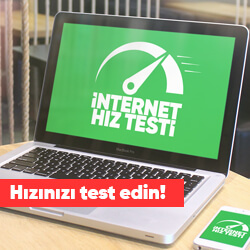Review of the Lenovo Smart Display
The essential thought behind the new Google-fueled Smart Displays that are coming this late spring is straightforward: take a Google Home keen speaker and put a screen on it, much the same as Amazon's Echo Show. Truly if that is all you detract from this survey, you have the fundamentals.
The Lenovo Smart Display is the first of these new gadgets available. LG, Sony, and JBL have additionally marked on to make them. Lenovo's adaptation goes at a bargain July 27th, evaluated at $199 for a model with a 8-inch screen and $249 for the model I tried, which has a 10-inch show.
There's something more going ahead here than only a screen for the Google Assistant, however. These Smart Displays run Android Things, a newish working framework in light of Android and intended for Internet of Things gadgets. That implies Google has another canvas for its virtual Assistant to work with, unhampered with the need to help any of the cruft that would join running full Android or Chrome.
With that clear slate comes an open door for Google to make precisely the thing it needs to make. Also, the outcome is something I wasn't generally expecting: a Google apparatus.
As a bit of equipment, Lenovo's interpretation of the Smart Display is rich — particularly when contrasted with the Echo Show. It has an expansive, level screen that sits to one side of a white speaker grille. It's thin crosswise over the greater part of the screen, with the back bending out behind the speaker. The bigger, more costly form has bamboo on the back, while the littler one has a significantly more exhausting dark plastic.
It's intended to work sitting on a level plane, however Lenovo put elastic feet on the end so it can sit vertically. Indeed, the equipment can, however the product hasn't been intended to work when the Smart Display is in picture mode (aside from Duo video calls), which is a bummer. This thing would be substantially more prone to fit on my swarmed kitchen counter on the off chance that I could stand it upright.
The two variants of the Lenovo Smart Display have a 10-watt speaker with two aloof tweeters. I've just tried the bigger 10-inch variant and the sound quality is tolerable, best case scenario — about keeping pace with the Google Home or passage level Amazon Echo. It can get bounty uproarious at max volume, yet in addition bounty contorted. It's fine as a shrewd speaker for essential stuff, yet no place close on a par with a Sonos One or HomePod.
The touchscreen show is obvious even in coordinate daylight however doesn't overpower the room oblivious — it has a substantial shine go, fundamentally, and great auto-brilliance settings. Yet, strangely, my most loved element isn't the screen, it's the little equipment switch that moves a shade to shut out the 5-megapixel wide-edge camera. It's valid that Google Duo doesn't bolster the perturbing "Drop In" highlight like the Echo Show and Spot, yet despite everything I feel more good putting a shrewd speaker in my room or restroom on the off chance that I know the camera is secured.
There are only two receivers for perceiving your voice, yet they appear to carry out their activity great until the point that you wrench the music volume up to the maximum. One of the advantages of Google-based speakers is that they complete a great job of perceiving the sound of your particular voice and conveying your own Google substance to you. With this gadget, I thought that it was appeared to have a marginally harder time recognizing my voice than the Google Home did, however just by a bit.
Indeed, even clocks are better with a screen. You can set the same number of as you like (dissimilar to on the Apple HomePod) and your latest clocks remain on the screen rather than the entire thing returning to the home screen too rapidly, as occurs on Amazon's Echo Show.
Naturally, a Smart Display sits in "encompassing mode," which demonstrates a pivoting slideshow of photographs. You can look over Google-gave pictures (craftsmanship and scenes and so forth) or collections from your Google Photos chronicle.
Tap the screen and you'll get a home screen. On the left you'll locate the nearby climate, which you can tap to grow. On the in that spot are a progression of cards which serve for the most part as proposals for things you can inquire. You can tap on a YouTube video or your schedule sections there, obviously, yet that is not by any stretch of the imagination the objective.
The card that appears on the homescreen can change contingent upon setting. On the off chance that you were simply viewing a video or tuning in to music, the card for that action will be first. On the off chance that you have a forthcoming gathering, the date-book card may be demonstrated first. In case you're stressed over individuals in your family observing your stuff, the telephone application lets you not show that data as a matter of course.
Likewise with other Google Home gadgets, you can set it up to perceive distinctive voices that are connected to various Google accounts, so individuals in your family can get their own data. However, the show will default to indicating data from the essential record. What's more, similarly as with other Google Home gadgets, inspiring it to work with your work data is an agony. You should by one means or another get your work timetable matched up finished to your own logbook, for instance.
In the event that you scan for something locally, you'll get an awesome Google Maps posting that gives you a chance to swipe through photographs of the area, get headings, and container around a guide. You can likewise get some information about the area, including getting bearings sent to your telephone.
That is about it, genuinely. It's a far as the visual UI goes. In any case, what extremely astounded me is the manner by which exquisite the product configuration felt. But a couple of falters, activity was smooth and liquid, as well as truly supportive in demonstrating to you what's happening. The text styles are perfect, the drop shadows are steady, and everything just adheres extremely well.
In all actuality, this is certainly not an extremely complex UI framework, so it would be a really monstrous whiff if Google couldn't make this work. Yet, taking a gander at the work that it's endeavoring to do with Material theming crosswise over Android and Chrome, you can advise that the heading Google needs to run with configuration is this correct framework. It's the clearest proclamation of what Google figures programming should resemble that I've found in late memory.
Past the rudiments, the most entrancing thing about adding a show to the Google Assistant is that Google is it accepting that as an open door to advance how it answers questions. To take the most clear illustration: on the off chance that you request that a how question like "How would I darn socks?" you're probably going to get a YouTube video rather than a piece from a site.
I extremely like what happens when you request a formula. Google restores a pack of conceivable outcomes pulled from the web, yet then re-positions them for this show. You get well ordered guidelines that stay on the screen until the point that you're prepared for the following piece of the directions. It's clever to the point that I instantly longed that I could import my own formulas into the framework rather than simply utilizing what's out there on the web.
Here's another, additionally lighting up illustration: I needed to test web picture seek, so I said "Hello Google, demonstrate me pictures of otters." Google returned with a jigsaw baffle of an otter I set up together on a sluggish lodge Saturday; I had taken a photograph of the nearly completed work to denounce the one missing piece. So I asked "when was this photograph taken" and Google knew the appropriate response — on the grounds that it was put away in the metadata for my own photo.
There are two subjects to bring up in these cases. The first is that Google is endeavoring to be more inventive by they way it conveys answers than previously, pulling in sight and sound sources both from the web and from my very own data. You kind of never truly know when you will get a reaction that is more immersive or customized when you make the inquiry.
The second topic? Great golly this thing is firmly coordinated into the Google biological community. It gets YouTube recordings. It utilizes Google's web pieces. It fills in as an astounding kitchen TV in case you're a YouTube TV endorser. It recognizes what my updates are and where my wedding was. It's particularly a gadget that tries to give you replies rather than web joins.
That doesn't imply that I surmise that this gadget is generally creepier than different items. I simply imply that the expansion of the screen and the manners in which Google have exploited it are ten times additionally intriguing in the event that you live completely inside Googleworld.
This isn't to imply that that it is totally a walled Google plant. Outsider administrations do appear here. You can set your default music player to Spotify or one of Google's music administrations; it additionally straightforwardly bolsters some video administrations like HBO Now, CNN, and Fox News. On the off chance that you need another video benefit in any case, you'll have to go to your telephone and chase down the Google Cast catch. Tragically (and peculiarly), not all video administrations can Cast to this gadget — Android Central has a rundown of what does and doesn't work (Netflix doesn't). It additionally bolsters a similar suite of Google Actions that the Google Home does — and outsider designers will have the capacity to make on-screen encounters in time.
It's fitting that the Lenovo Smart Display is so plainly intended to sit in the kitchen, since it truly is a machine, a Google apparatus. Despite the fact that you could put forth the defense that its association with Google's great cloud and AI makes it a PC, it's substantially more like our concept of what a machine truly is: basic, for the most part centered around a couple of basic errands, and ideally all around planned.
The Smart Display stage is those things, and it is considerably more centered around empowering Google encounters than some other item I've seen. Regardless of whether that predicts another course for the organization or basically what it thought was the most ideal approach to get this speaker out the entryway stays to be seen.
In case you're an Alexa client, I don't really believe there's sufficient here to warrant exchanging over. However, in the event that you're the sort of individual who has enabled Google to store and parse a huge amount of your information, you will love this thing.



















